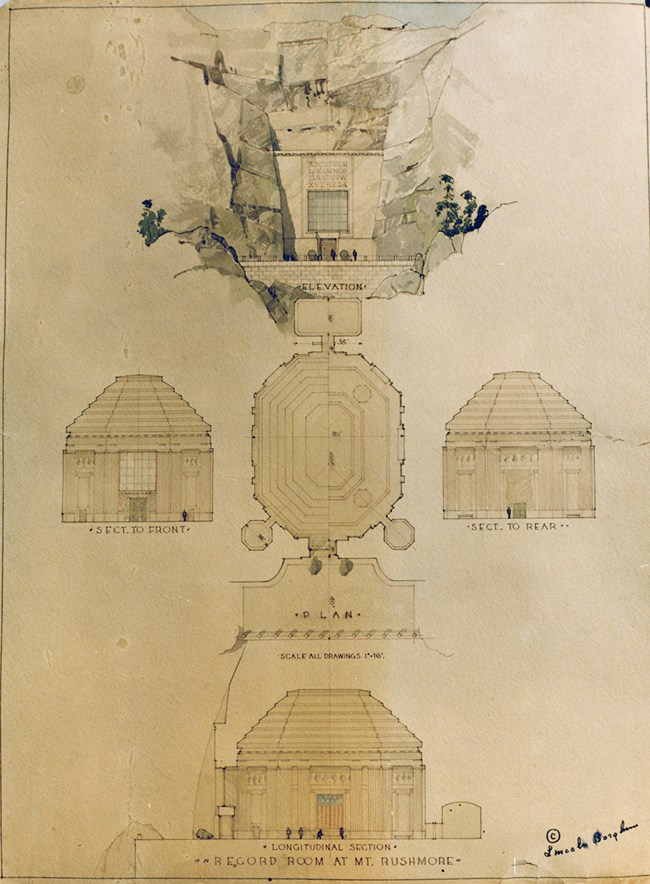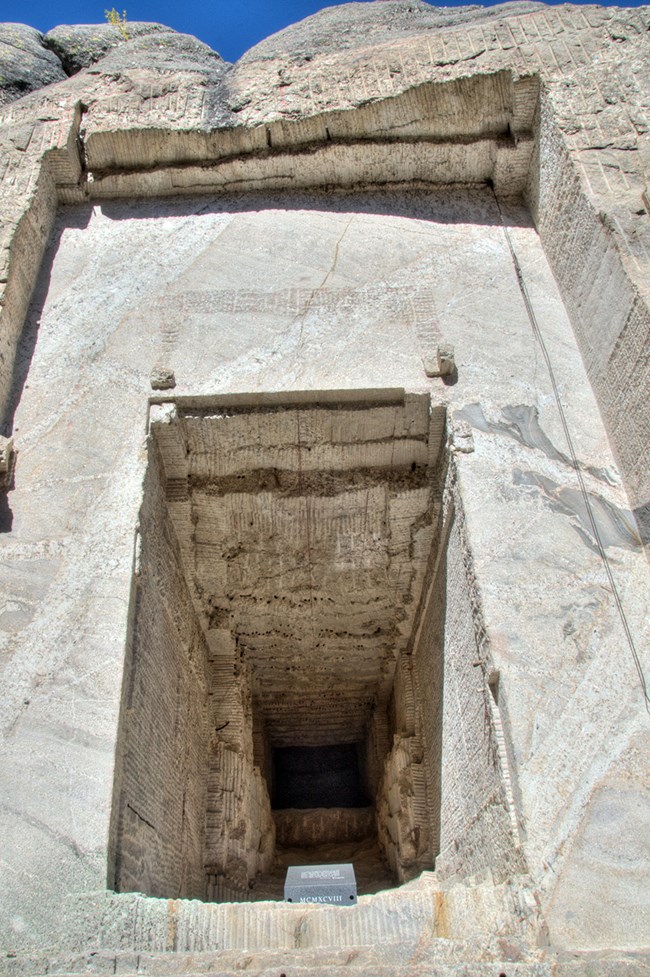
"You may as well drop a letter into the world’s postal service without an address or signature, as to send that carved mountain into history without identification."- Sculptor Gutzon Borglum, 1939
The IdeaGutzon Borglum had long dreamed of creating a written description to accompany the giant sculpture on Mount Rushmore. The original idea for the memorial included a large inscription or entablature to be carved alongside the figures. The entablature would describe the nine most important events in the history of the United States from 1776 to 1906 (From Washington to Roosevelt. It was to be about 80 by 120 feet in the shape of the Louisiana Purchase. This plan failed for two critical reasons. First, the text could not be made large enough to read at such a great distance. Also, after relocating the Jefferson head, that section of the mountain was needed for the Lincoln head. Because of these difficulties, another more lasting plan was developed. 
LocationBorglum next planned to create a large room within the mountain. This chamber would hold the documents and artifacts most central to American democratic history. The proposed large room, 80 by 100 feet was to be drilled into the north wall of the small canyon behind the faces. His scheme also called for an 800-foot granite stairway to reach the room. The steps would begin near his studio, rise gradually to meet the canyon mouth behind Lincoln’s head, and then lead to the entrance of the great hall. The PlanThe recesses inside this hall would house bronze and glass cabinets containing important historical documents, such as the Constitution and the Declaration of Independence. Also included in the hall would be busts of famous Americans and a list of U.S. contributions to the world in science, industry and the arts. The entrance would be 20 feet high by 14 feet wide with cast glass doors opening into a higher chamber. A bronze eagle, with a wingspread of 38 feet, would be placed above the door. Words inscribed over the eagle would read: "America’s Onward March" and "The Hall of Records." 
Charles D'Emery ConstructionConstruction of the hall took place between July 1938 and July 1939, when a 70-foot tunnel was blasted into the mountain. It remains very rough cut, and tapers to a point at the back. Work halted in 1939 when Congress directed that construction should be executed only on the faces. With Borglum’s death in 1941 and American involvement in World War II, all work on the memorial came to a close on October 31, 1941. The Hall of Records TodayAlthough Borglum’s grand scheme for the Hall of Records had to be abandoned, the idea remained. On August 9, 1998, Gutzon Borglum’s dream was completed when a repository of records was placed in the floor of the hall entry. This repository consists of a teakwood box, inside a titanium vault, covered by a granite capstone. Etched on the capstone is the following quote by Gutzon Borglum: "...let us place there, carved high, as close to heaven as we can, the words of our leaders, their faces, to show posterity what manner of men they were. Then breathe a prayer that these records will endure until the wind and rain alone shall wear them away." 
NPS The repository contains sixteen porcelain enamel panels. Inscribed on the panels is the story of how Mount Rushmore came to be carved, who carved it, the reasons for selecting the four presidents depicted on the mountain and a short history of the United States. This repository is not accessible to visitors but is left as a record for people thousands of years from now who may wonder how and why Mount Rushmore was carved. |
Last updated: March 28, 2023
